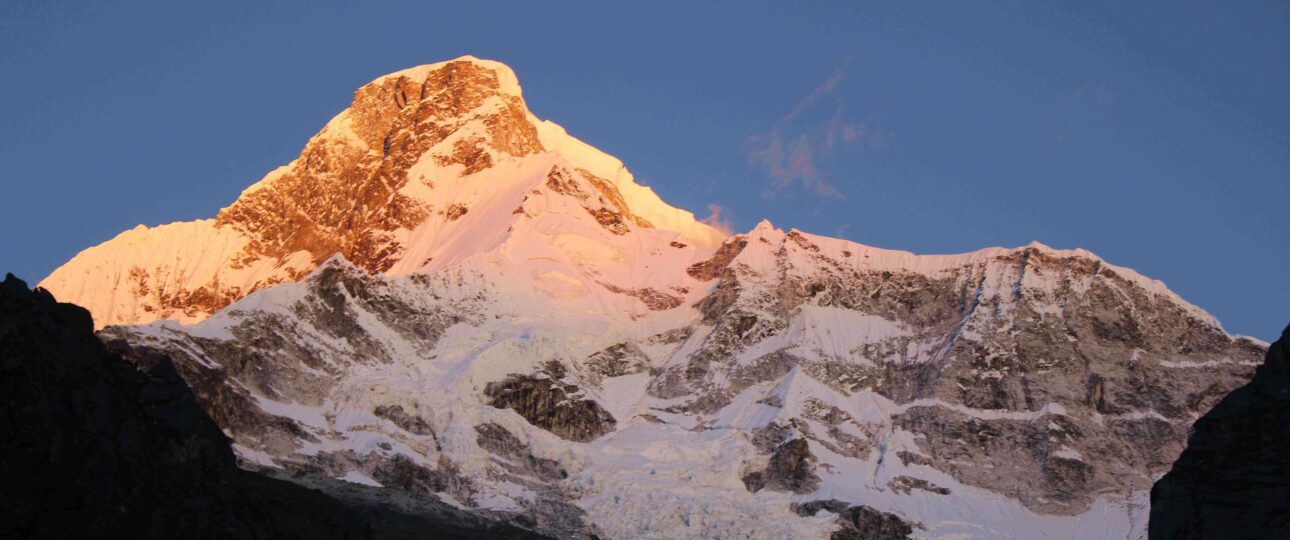Annapurna Base Camp (ABC) Trek is one of the most popular treks in Nepal. It is relatively easy and shorter while still incorporating diverse terrain, culture and wildlife along with the most spectacular and close up view of Annapurna range, Machhapuchhre, Hiunchuli and Dhaulagiri.
The region is home to different animals like clouded leopards, Himalayan Tahr, Himalayan Giant Honeybee, Pheasants etc. In spring, it showcases many beautiful flowers including the national flower of Nepal – Rhododendron. Orchids, Machhapuchhre massif and the deepest gorge Kali Gandaki keeps you company during the trek. You will spot at times high cascading waterfalls. And, you will get to learn about people of different ethnicity, especially that of Gurung People when visiting Gurung Museum in Ghandruk.
Trekking Gears or Trekking Equipment Required
What to pack for the trek is one of the important questions. Not having proper gears can prove troublesome, cause health issues or just simply ruin your mood. So, here is a general idea of what you should bring to Annapurna Base Camp trekking.
- A light weight trekking boots. It is not impossible to do this trek in sneakers or trainers. Many people have. Just that you will be walking in snow for some part of the trek and boots offer more safety. If you are a women trekker, check out these best hiking boots for women of 2017.
If you will be trekking this one time only, no need to spend on hiking boots. Just make sure that your shoes are well fitting, light and comfortable.
- A pair of crocs
- Four pair of liner socks. Two pair for warm climate and two pair for cold climate. Trekking/liner socks are better but it is okay if you only have the normal ones.
- Few pairs of underwear. There are trekking underwear that you could buy in home. They are good for other outdoor activities as well. Normal ones can be bought in Nepal.
- A high-quality best down jackets and a down pant. You can buy or rent a good down jacket and a down pant in Nepal for cheap for a $1 or less per day.
- T-shirts and trousers keeping in mind both cold and warm temperature you will be traversing.
- A set of thermals. Or, you could layer up.
- A light sleeping bag. This can be bought or rented in Nepal too.
- A trekking pole. Though relatively easy, there are many ups and downs in this trek and a trekking pole can assist you. Else, you could find a sturdy stick en route and use it to support yourself.
- Two pairs of Gloves. One for warm weather and one for cold.
- A woolen hat
- Sunglasses
- A torchlight or a head torchlight
- A First aid kit including Diamox and Oral Rehydration Salts (ORS)
- Toiletries– Toilet paper, hand sanitizer, water purifiers, sunscreen, moisturizer, toothpaste and toothbrush.
- A waterproof map of Annapurna Base Camp
- Snacks you like and entertainment such as books, cards, an iPad etc.
If you are unsure of what equipment to buy in Nepal and what to bring from home, this article will help you decide whether to buy trekking equipments at home or in Nepal.
Some Frequently Asked Questions
Here are some of the frequently asked questions answered to provide a clearer picture on Annapurna base Camp Trek.
1) How fit do I need to be to do this trek?
Annapurna Base Camp is a Grade B or a moderately difficult trekking route. So any fit person can do this trek, even if you do not have any previous experience. You should be aware of what to expect and mentally prepare for it. Then, as long as you will to, you can.
2) How long do we walk every day when doing Annapurna Base Camp trekking?
On average, you walk about 4 to 6 hours per day. One or two days can be as less as 3hrs and one or two days can be as long as 7hrs.
3) What is the highest altitude reached in this trek?
The highest altitude reached is 4190m. This is the elevation of Annapurna Base Camp. ABC is the highest we will climb in this trek.
4) What about battery charging and hot shower facilities?
Yes, you can charge batteries en route. Charger should be brought. There are hot shower facilities as well. You may have to pay certain amount for both ($1-$2). Negotiate. Also, hot water facility could be free at lower elevation.
